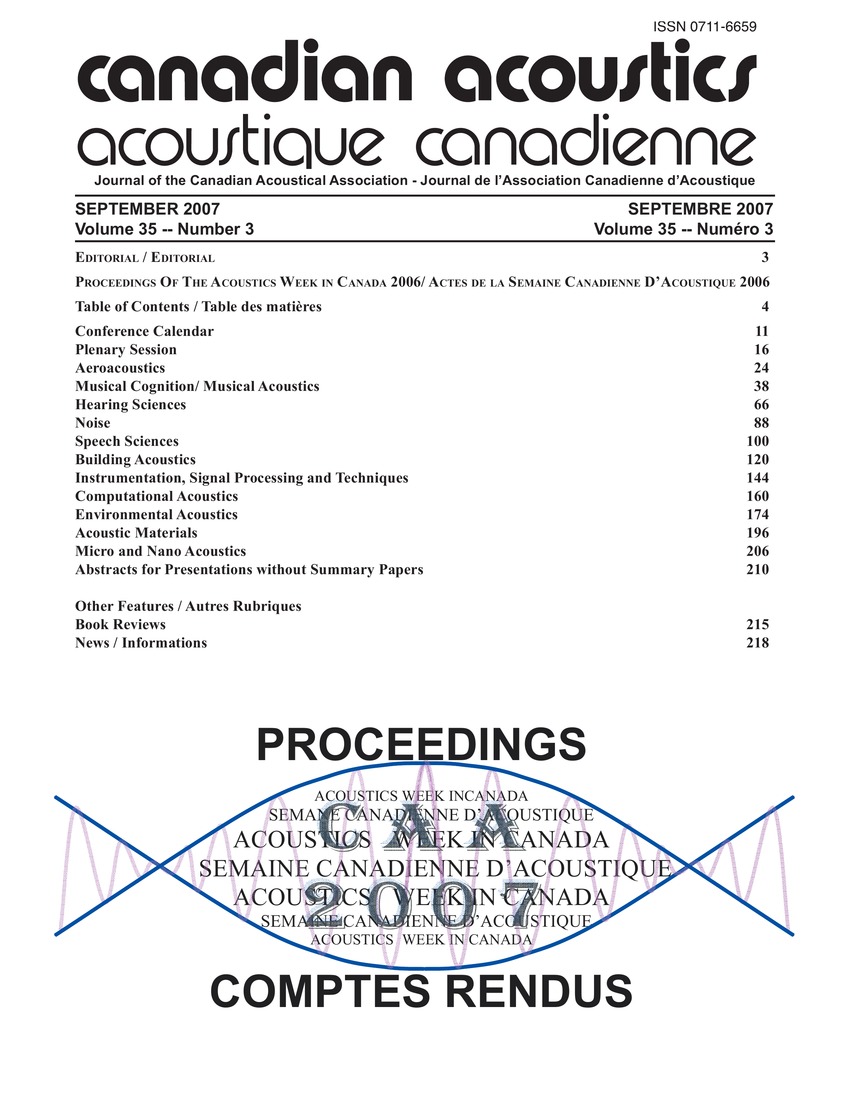Modeling the vibroacoustic response of multi-materials complex structures under mechanical excitation
Keywords:
Excited states, Finite element method, Large scale systems, Statistical methods, Transfer matrix method, Complex structures, Mechanical excitation, Vibroacoustic responseAbstract
Modeling of vibroacoustic response of multi-materials complex structure, made up of parallel and homogenous layers, under mechanical excitation is demonstrated. The first approach is based on the propagation of plane waves im the main structure and layers of the NCT, the second uses Statistical Energy Analysis (SEA) for the main structure and the layers of the NCT, while the last approach uses the model technique by calculating the equivalent impedance for the added treatment. The panel size of the aircraft is accounted for in the calculation of the acoustic indicators using the Finite Transfer Matrix Method (FEMM) and the term represents a geometrical correction to account for the finite size effect. The results show that the combination of methods can be used to eliminate the assumption of low coupling that is assumed in SEA calculations.Additional Files
Published
How to Cite
Issue
Section
License
Author Licensing Addendum
This Licensing Addendum ("Addendum") is entered into between the undersigned Author(s) and Canadian Acoustics journal published by the Canadian Acoustical Association (hereinafter referred to as the "Publisher"). The Author(s) and the Publisher agree as follows:
-
Retained Rights: The Author(s) retain(s) the following rights:
- The right to reproduce, distribute, and publicly display the Work on the Author's personal website or the website of the Author's institution.
- The right to use the Work in the Author's teaching activities and presentations.
- The right to include the Work in a compilation for the Author's personal use, not for sale.
-
Grant of License: The Author(s) grant(s) to the Publisher a worldwide exclusive license to publish, reproduce, distribute, and display the Work in Canadian Acoustics and any other formats and media deemed appropriate by the Publisher.
-
Attribution: The Publisher agrees to include proper attribution to the Author(s) in all publications and reproductions of the Work.
-
No Conflict: This Addendum is intended to be in harmony with, and not in conflict with, the terms and conditions of the original agreement entered into between the Author(s) and the Publisher.
-
Copyright Clause: Copyright on articles is held by the Author(s). The corresponding Author has the right to grant on behalf of all Authors and does grant on behalf of all Authors, a worldwide exclusive license to the Publisher and its licensees in perpetuity, in all forms, formats, and media (whether known now or created in the future), including but not limited to the rights to publish, reproduce, distribute, display, store, translate, create adaptations, reprints, include within collections, and create summaries, extracts, and/or abstracts of the Contribution.


